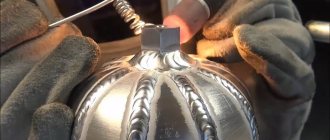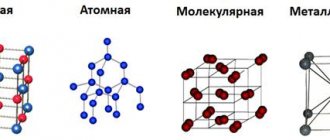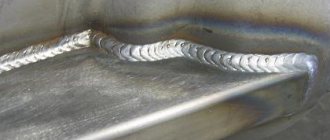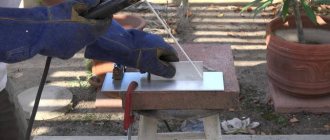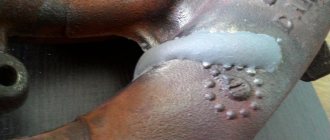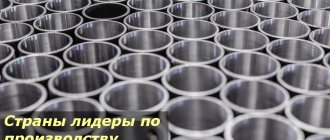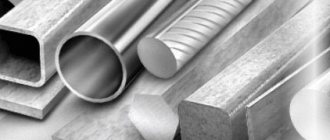Aluminum is the most abundant metal in the earth's crust. It belongs to the group of light metals, has a low density and melting point. At the same time, ductility and electrical conductivity are at a high level, which ensures its widespread use. So, let's find out what the specific melting point of aluminum and its alloys is (for example, in comparison with iron and lead), thermal and electrical conductivity, density, other properties, as well as what are the features of the structure of aluminum alloys and their chemical composition.
History of discovery
In the 16th century, the famous Paracelsus took the first step towards aluminum mining. From alum, he isolated “alum earth,” which contained the oxide of a then unknown metal. In the 18th century, the German chemist Andreas Marggraff returned to this experiment. He named the aluminum oxide “alumina,” which means “astringent” in Latin. At that time, the metal was not popular because it was not found in its pure form. For many years, English, Danish and German scientists tried to isolate pure aluminum. In 1855, at the Paris World Exhibition, the metal aluminum created a sensation. Only luxury items and jewelry were made from it, since the metal was quite expensive. At the end of the 19th century, a more modern and cheaper method of producing aluminum appeared. In 1911, the first batch of duralumin, named after the city, was produced in Duren. In 1919, the first airplane was created from this material.
Aluminum in our kitchens
Along with global new buildings, there are still many places in our lives where aluminum plays a leading role. And the smallest, but no less important area is occupied by our kitchens. But if you look closely, silver metal has almost taken over a dominant position there.
Our world is always full of extremes. Some people strive to surround themselves only with luxury goods. Others try to save wherever possible. Likewise, in our kitchens you can see either expensive gold-plated steel or cheap plastic. And this mainly concerns the housings of household appliances. From the coffee maker to the refrigerator.
But there are still enough people in the world who adhere to the golden mean. And no matter how trite it sounds, they choose equipment enclosed in an aluminum case. After all, this is the most reasonable solution that the manufacturer can offer. It solves several problems at once.
Aluminum body of a coffee machine Source tiu.ru
In terms of reliability and structural strength, aluminum can easily compete with steel. Hence the high safety during operation, since the material does not rust or burn. And its high plasticity allows you to stamp various shapes that will easily fit into any kitchen design. From modern to retro or country.
By the way. Very fashionable high-tech is generally impossible without silver structures. And all because of the magnificent shine of aluminum. But it happens that even a matte surface looks much more advantageous. True, this is all a matter of taste.
And in second place after equipment is kitchenware. But priorities may be different. And in order to dispel the objections of skeptics, one fact should be pointed out. Modern aluminum cookware is far from what the former Soviet man in the street was used to. The days when kitchens ate from brushed aluminum bowls, picking at them with gray (rather than silver) spoons or forks, are long gone.
Physical properties
Aluminum metal is characterized by high electrical conductivity, thermal conductivity, resistance to corrosion and frost, and ductility. It lends itself well to stamping, forging, drawing, and rolling. Aluminum can be welded well with various types of welding. An important property is its low density of about 2.7 g/cm³. The melting point is about 660°C. The mechanical, physicochemical and technological properties of aluminum depend on the presence and amount of impurities that worsen the properties of the pure metal. The main natural impurities are silicon, iron, zinc, titanium and copper.
According to the degree of purification, aluminum is distinguished between high and technical purity. The practical difference is the difference in corrosion resistance to certain environments. The purer the metal, the more expensive it is. Technical aluminum is used for the production of alloys, rolled products and cable and wire products. High purity metal is used for special purposes. In terms of electrical conductivity, aluminum is second only to gold, silver and copper. And the combination of low density and high electrical conductivity allows it to compete with copper in the field of cable and wire products. Long-term annealing improves electrical conductivity, while cold hardening worsens it.
The thermal conductivity of aluminum increases with increasing purity of the metal. Impurities of manganese, magnesium and copper reduce this property. In terms of thermal conductivity, aluminum is inferior only to copper and silver. Due to this property, the metal is used in heat exchangers and cooling radiators. Aluminum has a high specific heat capacity and heat of fusion. These figures are significantly higher than those of most metals. The higher the purity of aluminum, the more it is able to reflect light from the surface. The metal is well polished and anodized.
Aluminum has a high affinity for oxygen and is covered in air with a thin, durable film of aluminum oxide. This film protects the metal from subsequent oxidation and provides its good anti-corrosion properties. Aluminum is resistant to atmospheric corrosion, sea and fresh water, and practically does not interact with organic acids, concentrated or diluted nitric acid.
Caring for aluminum cookware
You need to start with universal advice. It is better to wash dishes immediately after use. Firstly, it is much easier. Secondly, this way you can extend the service life of the item. The only caveat is that you need to give the dishes time to cool. After all, even a drop of cold water touching hot metal can lead to its deformation.
Removing fat and burning
The shine of aluminum returns even after many years of burning have been removed:
- You will need a large metal container so that the damaged frying pan or saucepan is completely drowned in it.
- The container is filled with water.
- A piece of laundry soap is ground on a grater.
- The powder is added to water.
- 300 grams of silicate glue is poured in there.
- The solution is brought to a boil and dirty dishes are immersed in it.
- It is necessary to keep it on low heat for at least one hour.
- After this, with precautions, it is removed from boiling water.
- Soft flannel easily and quickly removes softened smoke.
After completing the cleaning operation, rinse the product thoroughly. In the same way, scale is removed from the surface. But you can try preparing a solution from ammonia (10 drops per liter) and soap. The cleaning technology is the same.
Removing carbon deposits from an aluminum frying pan Source sdelai-lestnicu.ru
Bringing back the shine
The following steps will help make aluminum items look like new:
- Pour sour milk inside the dish and leave for 40 minutes.
- Rub the walls with half a sour apple or lemon. Leave the dishes for a couple of hours.
- Soak the item in vinegar for several hours.
- Boil the chopped onion in a bowl for 10 minutes.
- Rub the wet surface with tooth powder and leave overnight.
After performing any of the operations, you should always finish with a thorough rinse in warm water.
Fighting blackness
Wine vinegar or citric acid can restore shine to aluminum after it has been smoked over a fire:
- The napkin is moistened with these solutions. Then the walls are wiped with it.
- Water is poured inside the dish. Either vinegar or acid is added to it.
- The liquid is brought to a boil. The fire is reduced to a minimum and wait no more than 15 minutes.
- After cooling, the solution is drained.
- The walls are covered with a soft sponge and warm water.
Usually, when camping, sand is used for cleaning to clean the pot from the soot of the fire. Do not do this. The reasons will be listed below. It is better to bring the smoked dishes home and use the above recipe.
Cautions
All harsh types of cleaning products are strictly prohibited. Even if you don't apply much force, the surface will still be scratched. Violation of the protective film will result in aluminum coming into contact with food.
Washing dishes with a hard washcloth Source biolshop.com.ua
The second reason to avoid harsh cleaners is that steel can leave deep grooves. They become clogged with dirt over time. It is not possible to remove it from a deep scratch. For the same reason, it is better not to use sand or any abrasives.
Soda is also prohibited. Although it is considered a universal cleaner, it is absolutely not suitable for aluminum. After all, it contains alkalis, and they will be destructive to the outer protective layer.
Do not wash items in the dishwasher. Firstly, this will cause the aluminum to lose its shine. Secondly, detergents for these units, without exception, contain alkali. Manufacturers even specifically increase their quantity to increase the quality of washing. The dishes will be hopelessly damaged.
Chemical properties
Aluminum is a fairly active amphoteric metal. Under normal conditions, a strong oxide film determines its durability. If the oxide film is destroyed, aluminum acts as an active reducing metal. In a finely crushed state and at high temperatures, the metal interacts with oxygen. When heated, reactions occur with sulfur, phosphorus, nitrogen, carbon, and iodine. Under normal conditions, the metal reacts with chlorine and bromine. There is no reaction with hydrogen. With metals, aluminum forms alloys containing intermetallic compounds - aluminides.
Provided that the oxide film is removed, vigorous interaction with water occurs. Reactions with dilute acids occur easily. Reactions with concentrated nitric and sulfuric acid occur when heated. Aluminum reacts easily with alkalis. Practical application in metallurgy has found the property of reducing metals from oxides and salts - aluminothermy reactions.
Harm from eating from aluminum cookware
When cutting through the huge pile of horror stories about the dangers associated with aluminum, you should pay attention to the official statement of the World Health Organization. Back in 1998, it was said that in order for aluminum to cause harm to the human body, more than 50 mg of it must be ingested at one time.
For a simple example, we can say that even sour cabbage soup, after standing in an aluminum pan for a whole week, absorbs no more than 3 mg of the substance. And since the entire human environment contains aluminum, it enters the body constantly. Little of. It is also produced by the body.
But even increased intake of medications (containing aluminum) cannot be dangerous. If we put all the factors together, then the daily norm of a substance can never be exceeded in the natural order. In order to get aluminum poisoning with food, you only need to intentionally add it in large quantities.
Over the course of 20 years since the first statement, WHO has repeatedly issued various reports suppressing various myths. One of them is the connection between Alzheimer's disease and eating food from aluminum utensils. Medical studies have not confirmed this.
Aluminum and Alzheimer's Source Yandex.Zen
Receipt
Aluminum is in first place among metals and in third place among all elements in terms of abundance in the earth's crust. Approximately 8% of the mass of the earth's crust is this metal. Aluminum is found in the tissues of animals and plants as a trace element. In nature, it is found bound in the form of rocks and minerals. The rocky shell of the earth, which is at the base of the continents, is formed precisely by aluminosilicates and silicates.
Aluminosilicates are minerals formed as a result of volcanic processes under appropriate high temperature conditions. During the destruction of aluminosilicates of primary origin (feldspars), various secondary rocks with a higher aluminum content (alunites, kaolins, bauxites, nephelines) were formed. Aluminum is included in secondary rocks in the form of hydroxides or hydrosilicates. However, not every aluminum-containing rock can be a raw material for alumina, a product from which aluminum is produced using the electrolysis method.
Aluminum is most often obtained from bauxite. Deposits of this mineral are common in countries of the tropical and subtropical zone. In Russia, nepheline ores are also used, deposits of which are located in the Kemerovo region and on the Kola Peninsula. When extracting aluminum from nephelines, potash, soda ash, cement and fertilizers are also produced along the way.
Bauxite contains 40-60% alumina. It also contains iron oxide, titanium dioxide, and silica. The Bayer process is used to isolate pure alumina. In an autoclave, the ore is heated with caustic soda, cooled, and the “red mud” (solid sediment) is separated from the liquid. Afterwards, aluminum hydroxide is precipitated from the resulting solution and calcined to obtain pure alumina. Alumina must meet high standards for purity and particle size.
Alumina (aluminum oxide) is extracted from the mined and enriched ore. The alumina is then converted into aluminum using electrolysis. The final stage is recovery by the Hall-Heroux process. The process is as follows: during the electrolysis of an alumina solution in molten cryolite, aluminum is released. The cathode is the bottom of the electrolysis bath, and the anode is carbon bars located in cryolite. Molten aluminum is deposited under a solution of cryolite with 3-5% alumina. The process temperature rises to 950°C, which is much higher than the melting point of aluminum itself (660°C). Deep purification of aluminum is carried out by zone melting or distillation through subfluoride.
How is aluminum used in construction?
First, some statistics. The fact is that more than 25% of all aluminum produced in the world is used for construction. After all, this lightweight metal is completely non-toxic and quite durable. The estimated service life of an aluminum structure starts at 80 years. But it has been in use for much longer.
Roof of a building covered with aluminum panels Source stroykroff.ru
In addition, it can be used in almost any climatic conditions. The temperature range at which the metal does not lose its properties extends from minus 80 to plus 300 °C. And the thermal insulation ability of siding allows you to protect the room from the cold four times better than additional brickwork in one row.
If we take rigidity and load-bearing capacity, then compared to steel the gain will be 2-3 times. And if you replace reinforced concrete structures, then it will be as much as seven times. Therefore, the conclusion is obvious. Working with lightweight material is not only easier, but also more profitable.
Production
Aluminum is easy to process. And a flat or cylindrical ingot can be easily transformed into the elements needed for construction. In slabs for suspended ceilings and wall panels. In stairs and roofing sheets. And even into windows and doors.
Aluminum entrance doors Source promportal.su
To create any form, from the simplest to the most architecturally complex, the extrusion method is most often used. It consists in the fact that softened metal is placed in a special matrix. Then future parts are simply extruded through holes of various sections. After this process, no further refinement is required. The dimensions of the resulting elements maintain maximum accuracy.
Sheets, wires and strips are produced by hot or cold pressure. And parts most often do not require any protection, since aluminum is not afraid of rust. And to add shine, aluminum is polished.
But if, according to the technology, it contains many different impurities, then the anti-corrosion properties can be significantly reduced. And in this case, the metal is additionally anodized. Or simply coated with various paint compositions.
But anodizing most often ends with painting. After creating another protective film on the metal surface using an electrochemical method, the part is immersed in a heated paint bath. After this, the surface acquires a unique attractiveness. And it is precisely for this quality that the material is so dearly loved by many designers.
Skyscrapers
No metropolis can do without such buildings. And it’s not just a lack of free space for development. The use of aluminum structures can significantly reduce carbon dioxide emissions into the atmosphere. Which is the most important environmental problem today.
The famous Mary-ex tower Source landshaftnik.com
In addition, the building’s lightweight translucent facades allow significant savings on its energy costs. The fact is that it is not ordinary glass that is inserted into the aluminum frame, but its analogue with low thermal conductivity. This simultaneously solves two problems. The large glass area allows for less use of artificial lighting. And thanks to U-Value technology, glass does not let heat in in summer, and does not let out heat in winter.
A striking example of the successful use of aluminum facades is the Crystal building in London. It houses the Center for Sustainable Urban Development. And although the building is not a skyscraper, all energy-saving technologies are perfectly demonstrated in it. Crystal uses 46% less electricity than steel and concrete buildings. In addition, it produces as much as 65% lower carbon dioxide production. This is in comparison with the same reinforced concrete office buildings of the same area.
Considering that the planet is facing imminent overpopulation, aluminum comes out on top. As a building material of the future. And the fact that it reduces carbon emissions and is also 100% recyclable plays a significant role.
Building made of aluminum and glass in London Source mosdolshchik.rf
Pavilions
The construction of premises with a huge area cannot be ignored. Such buildings are always needed in megacities. They serve as entertainment centers, exhibition or sales areas. And modern architecture, using the technology of creating a mesh shell, builds pavilions of all shapes and sizes all over the world.
The method was developed back in 1896. Its author is Russian engineer and architect Vladimir Shukhov. But the construction of such a structure requires very complex calculations. And in those distant times, not everyone took them on.
The age of computerization has greatly simplified modeling. In addition, new building materials appeared. Take, for example, aluminum. Therefore, the modified technology has firmly entered into modern architecture. And the method of creating a mesh shell began to dominate in the construction of large pavilions.
Aluminum roof over an amusement park in Abu Dhabi Source tonkosti.ru
The method allows you to give the shell any shape. And the materials can be both steel and aluminum alloys. In the latter case, the structure is almost three times lighter. After all, the roof can also be made of light and durable alloys.
Several of the most famous pavilions can be cited as examples. And each of them has its own characteristics. An amusement park, well, of simply gigantic proportions, was built in Abu Dhabi. Its aluminum roof broke all area records. It would make more than sixteen and a half thousand cars.
The huge Riverwalk atrium near Dallas stretches over 16,000 square meters. The pavilion is covered with an aluminum roof and this allows you to maintain your own microclimate inside. And if the roof of the Dzintari concert hall in the Baltic Jurmala were not made of aluminum, then it would not be able to move apart.
Athletic facilities
Aluminum made it possible to build literally all indoor stadiums and swimming pools. Heavy steel simply could not become the basis of the mesh shell. Before the use of aluminum, only outdoor sports facilities could be realized.
A striking example is the large-scale construction of the Aquatics Center in London. Three large swimming pools are located under the non-standard shaped roof. The roof itself has the appearance of a sea wave and weighs as much as three thousand tons. Below it there are 17,500 seats for spectators.
Water sports building with aluminum roof Source veryimportantlot.com
Aluminum has become a key material in the construction of all significant facilities for the Winter Olympics in Sochi. And these are just a couple of examples. But no one stops there. New technologies are being searched for. And soon the scientific world promises to introduce innovative aluminum panels into production, which will revolutionize the construction of high-rise buildings.
Application
Aluminum is used in metallurgy as a base for alloys (duralumin, silumin) and an alloying element (alloys based on copper, iron, magnesium, nickel). Aluminum alloys are used in everyday life, in architecture and construction, in shipbuilding and automotive industry, as well as in space and aviation technology. Aluminum is used in the production of explosives. Anodized aluminum (coated with colored films of aluminum oxide) is used to make jewelry. Metal is also used in electrical engineering.
Why does metal stink?
The main cause of the “metallic” smell is fats. Under the action of oxidoreductase enzymes, fats are oxidized to lipid peroxides. Iron cations Fe2+ decompose lipid peroxides to form intensely odorous substances.
Interesting materials:
How to upload a photo from a gallery to Odnoklassniki? How to upload a photo from VK? How to upload a photo to your VKontakte avatar? How to upload a photo to Facebook in good quality? How to upload a photo to a Facebook page? How to download photos from iPhone to iPad? How to upload photos from iPhone to Google Drive? How to upload photos from iPhone to Google Photos? How to upload a photo from Google Photos? How to upload a photo from a computer?
Structural steels.
They are classified according to the characteristics and chemical composition of the alloys. If they are high quality and ordinary. Both are carbon steels, although the carbon content in them is insignificant.
The purpose of ordinary structural alloys is the manufacture of industrial products that must be subjected to serious mechanical loads: nails, bolts, angles, channels, beams, etc. High-quality structural steels are suitable for the manufacture of parts used in mechanical engineering. Of course, their withstand loads are much lower, such grades have become much softer, they are used for the manufacture of parts by cold stamping. In addition, there are especially high-quality brands, they are called cryogenic. They retain their strength characteristics at extremely low temperatures. They are used to make containers for transporting and storing liquefied gases, and are also used in the construction of facilities in permafrost conditions.
Brass.
Alloy of copper and zinc. Different ratios of these two components make it possible to obtain alloys with different properties. If the zinc content is from 5 to 20%, brass is called red, and yellow if the zinc content is 20-36%
These alloys are malleable and have a fairly low melting point. Externally, brass resembles gold, so it is often used in applied arts and decoration. Furniture fittings, locks, decorative elements. Musical instruments are made from brass. It is also used in the military industry.
Electrical conductivity and current carriers
The electrical conductivity of all substances is associated with the presence of current carriers (charge carriers) in them - mobile charged particles (electrons, ions) or quasiparticles (for example, holes in a semiconductor) capable of moving in a given substance over a long distance; in a simplified way, we can say what is meant that such a particle or quasiparticle should be able to travel an arbitrarily large, at least macroscopic, distance in a given substance, although in some particular cases carriers can change, being born and destroyed (generally speaking, sometimes, perhaps, through a very short distance), and carry current, replacing each other.
Since the current density is determined for one type of carrier by the formula:
j→=qnv→cp.,{\displaystyle {\vec {j}}=qn{\vec {v}}_{cp.},} where q{\displaystyle q} is the charge of one carrier, n{\displaystyle n} is the concentration of carriers, v→cp.{\displaystyle {\vec {v}}_{cp.}} is the average speed of their movement,
or j→=∑iqiniv→icp.{\displaystyle {\vec {j}}=\sum _{i}q_{i}n_{i}{\vec {v}}_{icp.}} for more than one type of carrier, numbered by the index i,{\displaystyle i,} taking a value from 1 to the number of types of carriers, each of which can have its own charge (possibly different in magnitude and sign), its own concentration, its own average speed of movement (summation in this formula is implied for all available types of carriers), then, given that the (steady-state) average speed of each type of particle when moving in a specific substance (medium) is proportional to the applied electric field (in the case when the movement is caused precisely by this field, which is what we are here we are considering):
v→cp.=μE→,{\displaystyle {\vec {v}}_{cp.}=\mu {\vec {E}},} where μ{\displaystyle \mu } is a proportionality coefficient called mobility and depending on the type of current carrier in a given specific environment.
It follows that the expression for electrical conductivity is valid:
σ=qnμ,{\displaystyle \sigma =qn\mu ,}
or:
σ=∑iqiniμi{\displaystyle \sigma =\sum _{i}q_{i}n_{i}\mu _{i}} - for more than one type of media.
Specific electrical conductivity of some substances (table)
Specific conductivity is given at +20 °C:
| Substance | Sm/m | Substance | Sm/m | Substance | Sm/m | Substance | Sm/m | Substance | Sm/m |
| silver | 62 500 000 | molybdenum | 18 500 000 | tin | 8 330 000 | mercury | 1 040 000 | marble | 10−8 |
| copper | 59 500 000 | tungsten | 18 200 000 | cast steel | 7 690 000 | nichrome | 893 000 | glass | 10−11 |
| gold | 45 500 000 | zinc | 16 900 000 | lead | 4 810 000 | graphite | 125 000 | porcelain | 10−14 |
| aluminum | 38 000 000 | nickel | 11 500 000 | nickel silver | 3 030 000 | sea water | 3 | quartz glass | 10−16 |
| magnesium | 22 700 000 | pure iron | 10 000 000 | constantan | 2 000 000 | the ground is wet | 10−2 | amber | 10−18 |
| iridium | 21 100 000 | platinum | 9 350 000 | manganin | 2 330 000 | distilled water | 10−4 |
